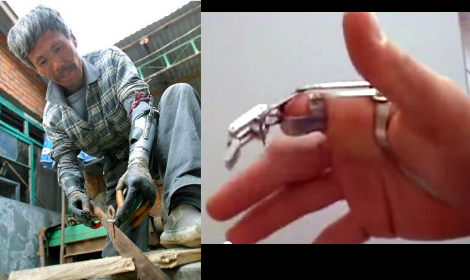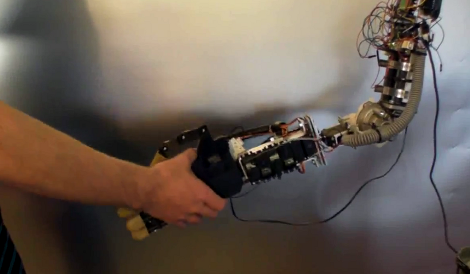
Just a few weeks ago we were wondering if we’d try to build our own prosthesis if we were ever to lose a limb. This pair of hacks answers that query with a resounding “YES!”.
To the right is a replacement pointer finger. The missing digit took the first two knuckles with it, but there’s enough left to easily interface with this creation. It’s a mechanically clever assembly that moves as you would expect the original to. See for yourself after the break. It seem the maker intended to mold silicone around the structure but never got around to posting an update video.
On the left we have a chinese man who lost his arms while fishing. It seems they were using homemade bombs instead of nets and one went off prematurely. Since then he’s constructed several different prosthetic arms, each with its own special purpose. This one has a saw connected to it but these two write ups on the man show images of him using a fork and wielding a hammer.
Continue reading “Replacing A Finger Or An Arm In The Hacker Tradition”
















